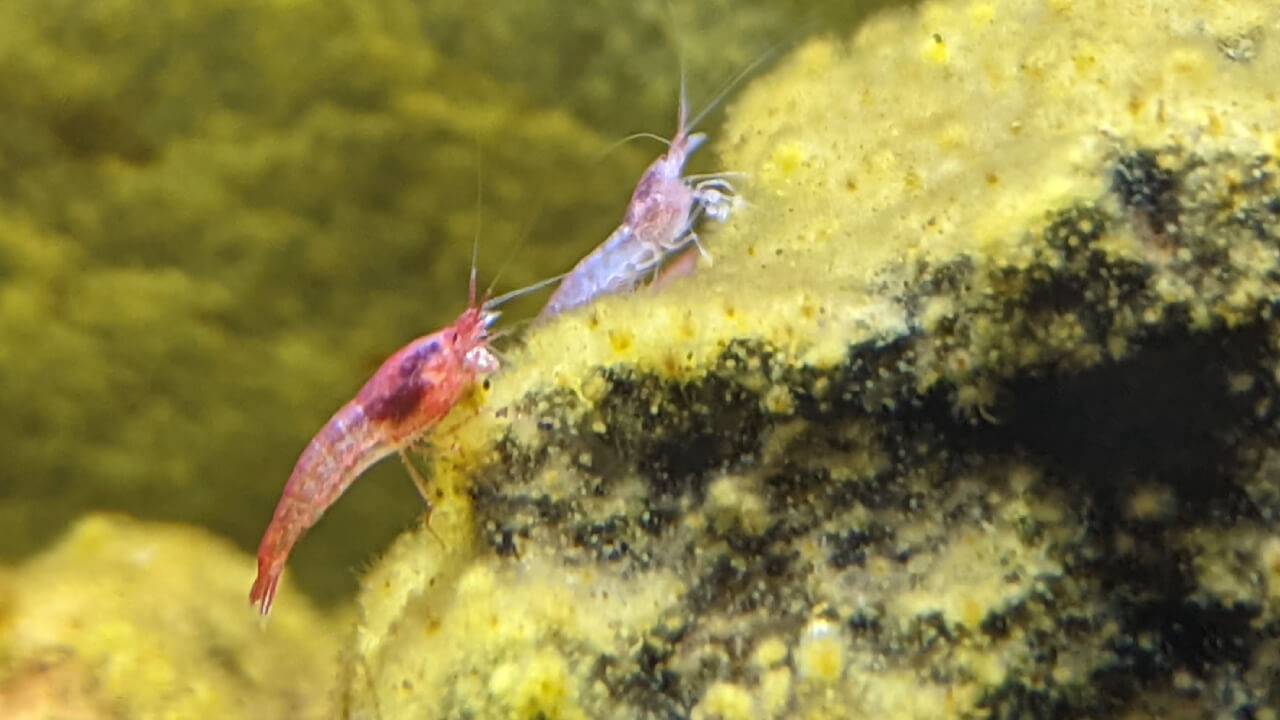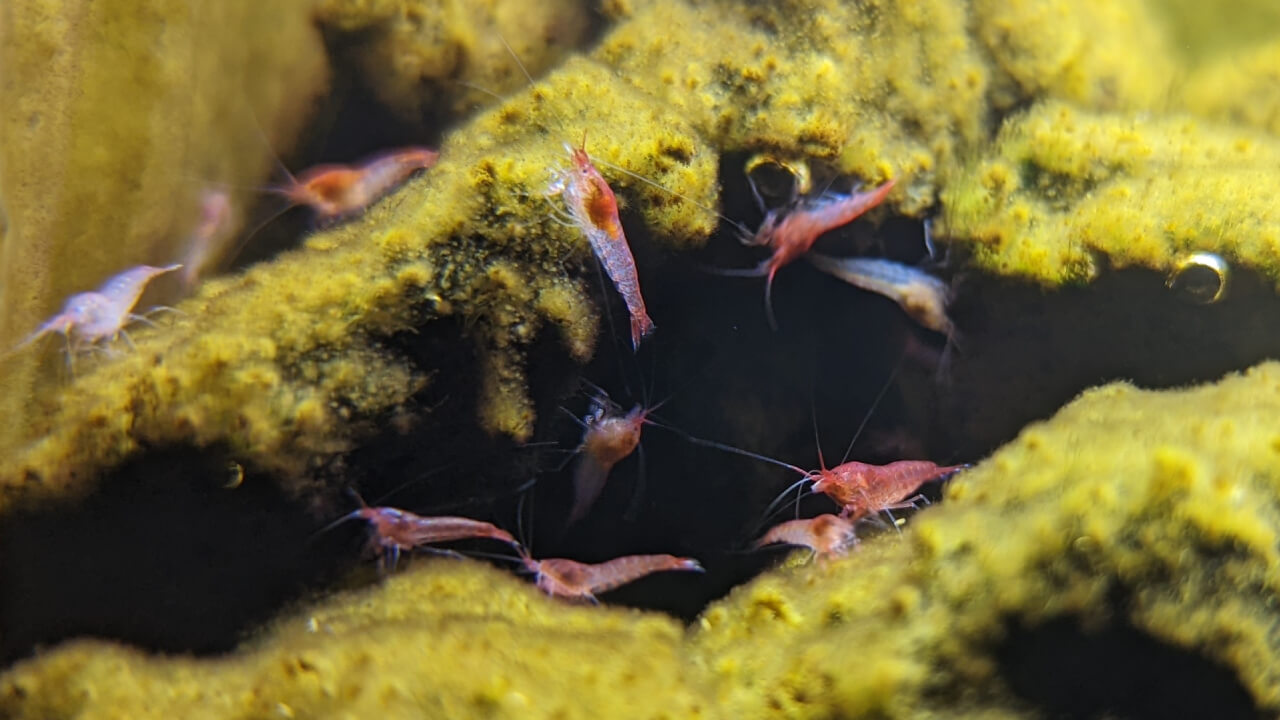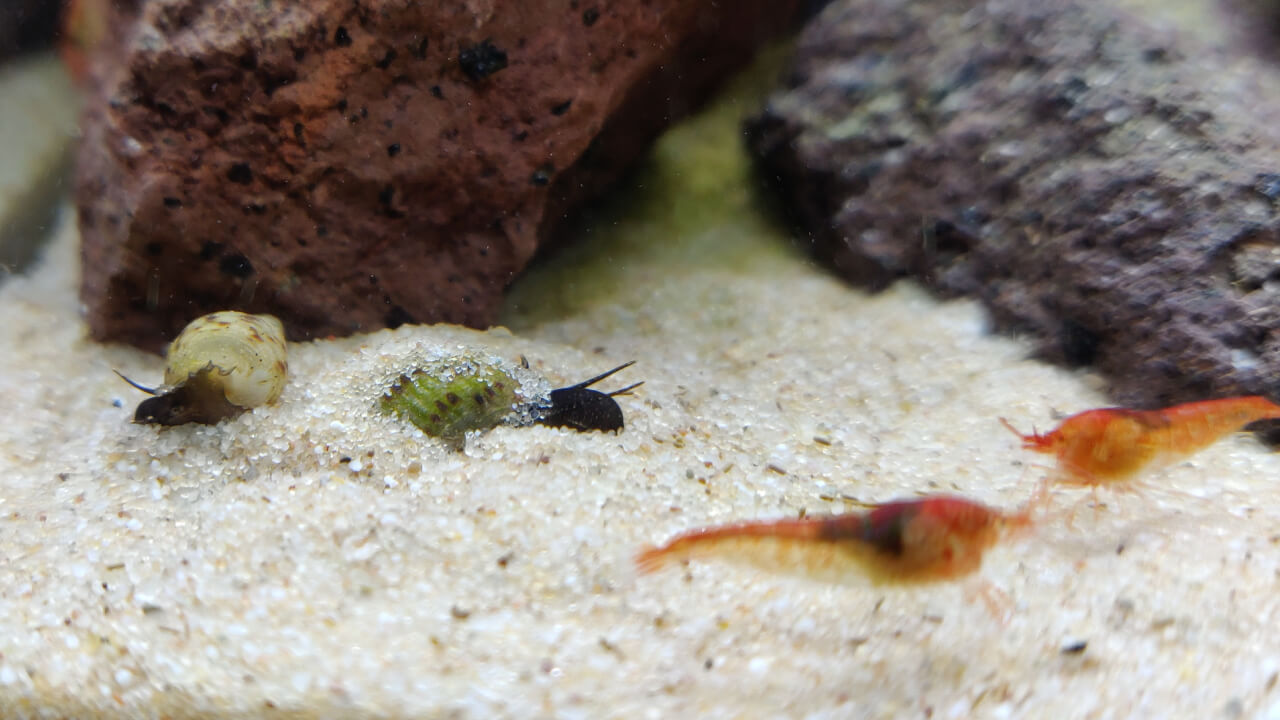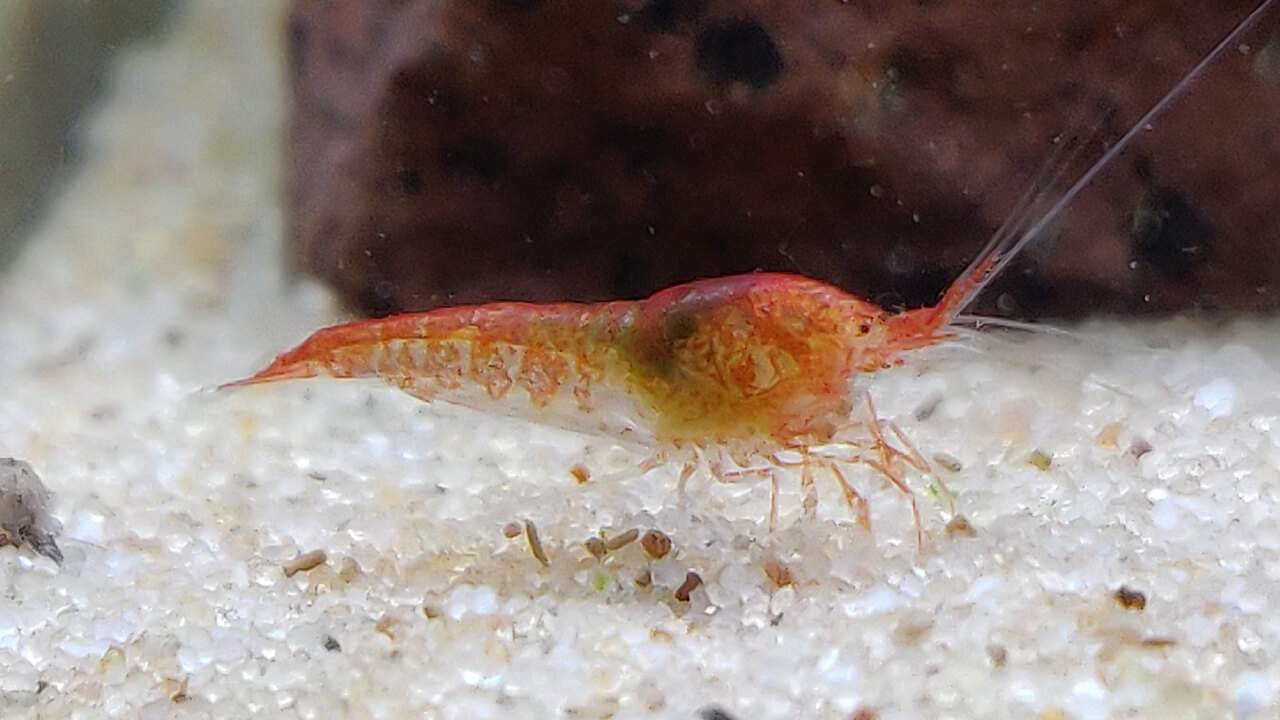- Common names
- Hawaiian red shrimp, Volcano shrimp, Super shrimp
Water parameters
- pH
- 7.5 - 8.5
- Temperature
-
20 - 30 °C
68 - 86 °F - Salinity
- 1.008 - 1.018 sg
Facts
Difficulty level- Easy
Lifespan- 15 - 20 years
Origin- Hawaii
Adult size- 15 mm / 0.6 inches
Opae Ula shrimp are tiny red shrimp that live in brackish water, and are only found around Hawaii.
They’re a fantastic choice for a beginner’s first shrimp tank. They’re really easy to care for and need very little maintenance.
It’s super simple to start your own Opae Ula tank.
In the wild, they live in small pools of water that are a mixture of freshwater and seawater. These pools have a salinity level roughly in the middle of these two types of water.
Names and meanings
The scientific name for these shrimp is Halocaridina rubra.
Their Hawaiian name, Opae’ula, literally translates to red shrimp. This is the name they’re called most often.
They’ve also got a few other names they’re known by:
- Hawaiian red shrimp
- Volcano shrimp
- Super shrimp
Opae Ula colours
Opae Ula shrimp can be any colour around the red spectrum, like yellow, orange, red, pink. They can sometimes be almost completely clear or white too.
They’re called Hawaiian red shrimp because red is the most common colour, the others are a bit rarer.
It’s believed that most of the shrimp from the main Island and Maui are a deep red colour. The shrimp found near the O’ahu island are lighter in colour, being pink or almost clear.

Opae Ula can also turn nearly transparent when they’re stressed. For example, when I use an algae scraper in my tank, it scares them a bit and their red colour seems to fade for a few hours. The colour comes back when they’re comfortable exploring again.
This is probably a way to help them camouflage into their surroundings a bit better, and make them feel safe.
Don’t panic if your shrimp are all clear, it can be a completely normal and healthy colour for them.
Watch for changes in colour instead. Deep red shrimp suddenly turning white could be a big problem.
What do they eat?
These shrimp have an absolutely tiny bioload as they don’t eat very much. This is part of the reason they’re so low maintenance.
Opae Ula will graze on the rocks and substrate in your tank all day and night. Small amounts of algae and biofilm will naturally grow over these surfaces and keep them well-fed.

You don’t really need to add any extra food if the tank’s been set up right and aged for a bit.
If you’d like to, you can feed tiny pieces of algae wafer or spirulina powder to make sure they’re eating enough.
Care and parameters
Opae Ula thrive in brackish water with a salinity between 1.008 and 1.018 sg. It’s a good idea to aim for roughly in the middle of this range, so you have a bit of wiggle room.
They don’t need a filter, nor do they need frequent water changes. I only do water changes on my tank every few months. This helps make sure they’ve got enough minerals in the water to molt safely and healthily.
They’re quite happy in a range of temperatures, but between 20 and 30 °C is ideal. You shouldn’t need a heater in the tank unless your room gets very cold.
On average, these shrimp live for between 10 and 15 years, but it’s possible for them to live for up to 20 years.
Their lifespan is much longer than other small shrimp species, like Neocaridina, which usually only live for up to 2 years.
Tank mates
Unfortunately, there’s not a lot of choice for tank mates in an Opae Ula tank.
Most other popular creatures live in either freshwater or saltwater, not the brackish middle ground.
The Malaysian Trumpet snail is one exception. These snails can live in both freshwater and brackish water, when they’re acclimated properly.

Trumpet snails will burrow in the sand, sifting it for food and shelter. This can help keep your substrate clean and avoid anaerobic gas pockets building up.
I’d definitely recommend adding a few Malaysian Trumpets if you like them. They’ll be a helpful member of the cleanup crew.
Breeding
Getting Opae Ula to breed is pretty easy.
You’ll notice more breeding during the warmer summer months, and less activity in the winter.
They might take a few weeks or even months to start breeding in a new tank, though. They want some time to adjust to their surroundings and feel safe again.
Opae Ula babies hatch from their eggs into a larvae stage. They bob around the water surface, floating with their heads down for a few days, like a drop shape.
After a few days, they begin to grow their legs and can start swimming around, looking for biofilm and algae to eat.

